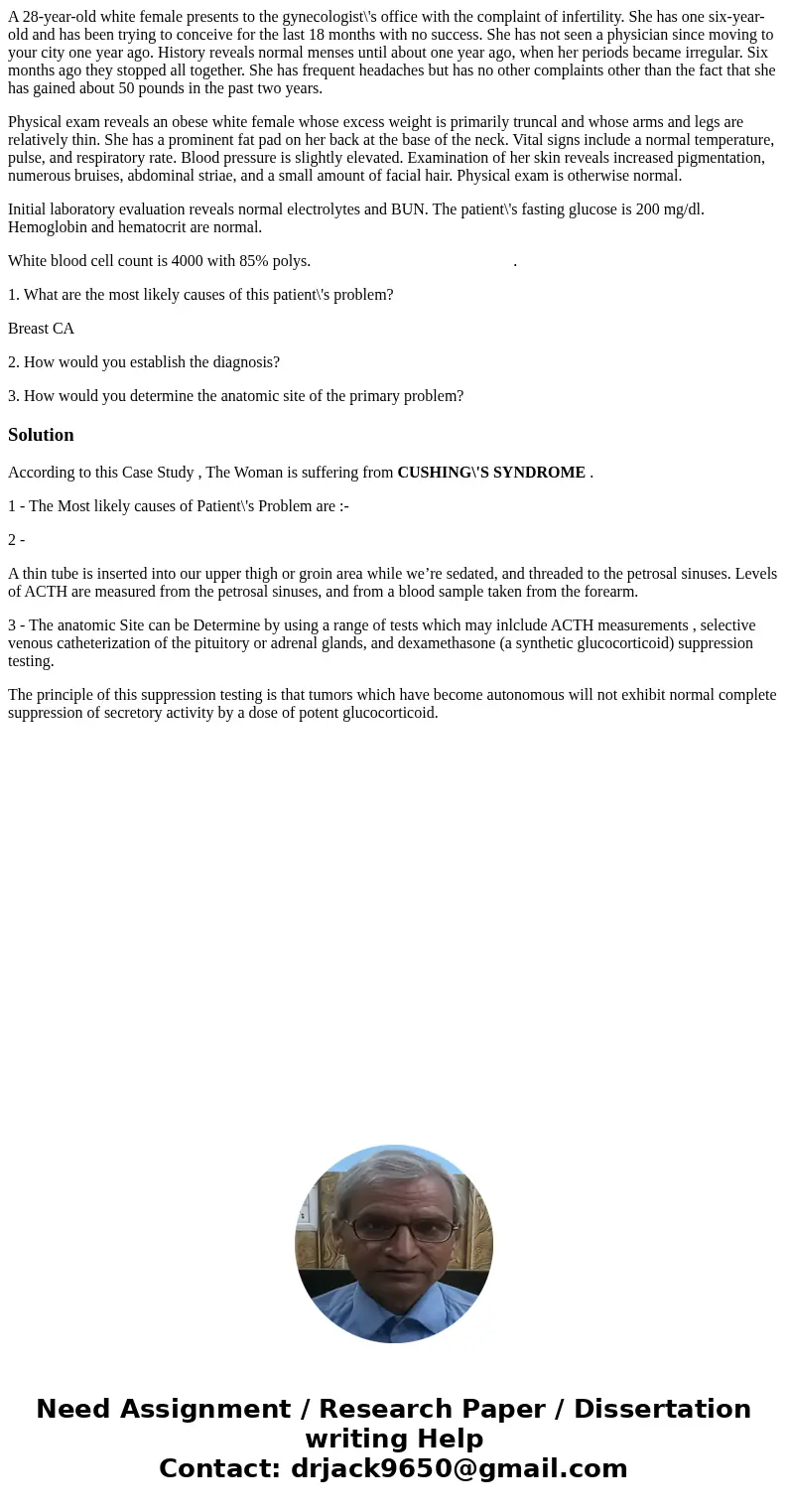A 28yearold white female presents to the gynecologists offic
A 28-year-old white female presents to the gynecologist\'s office with the complaint of infertility. She has one six-year-old and has been trying to conceive for the last 18 months with no success. She has not seen a physician since moving to your city one year ago. History reveals normal menses until about one year ago, when her periods became irregular. Six months ago they stopped all together. She has frequent headaches but has no other complaints other than the fact that she has gained about 50 pounds in the past two years.
Physical exam reveals an obese white female whose excess weight is primarily truncal and whose arms and legs are relatively thin. She has a prominent fat pad on her back at the base of the neck. Vital signs include a normal temperature, pulse, and respiratory rate. Blood pressure is slightly elevated. Examination of her skin reveals increased pigmentation, numerous bruises, abdominal striae, and a small amount of facial hair. Physical exam is otherwise normal.
Initial laboratory evaluation reveals normal electrolytes and BUN. The patient\'s fasting glucose is 200 mg/dl. Hemoglobin and hematocrit are normal.
White blood cell count is 4000 with 85% polys. .
1. What are the most likely causes of this patient\'s problem?
Breast CA
2. How would you establish the diagnosis?
3. How would you determine the anatomic site of the primary problem?
Solution
According to this Case Study , The Woman is suffering from CUSHING\'S SYNDROME .
1 - The Most likely causes of Patient\'s Problem are :-
2 -
A thin tube is inserted into our upper thigh or groin area while we’re sedated, and threaded to the petrosal sinuses. Levels of ACTH are measured from the petrosal sinuses, and from a blood sample taken from the forearm.
3 - The anatomic Site can be Determine by using a range of tests which may inlclude ACTH measurements , selective venous catheterization of the pituitory or adrenal glands, and dexamethasone (a synthetic glucocorticoid) suppression testing.
The principle of this suppression testing is that tumors which have become autonomous will not exhibit normal complete suppression of secretory activity by a dose of potent glucocorticoid.

 Homework Sourse
Homework Sourse